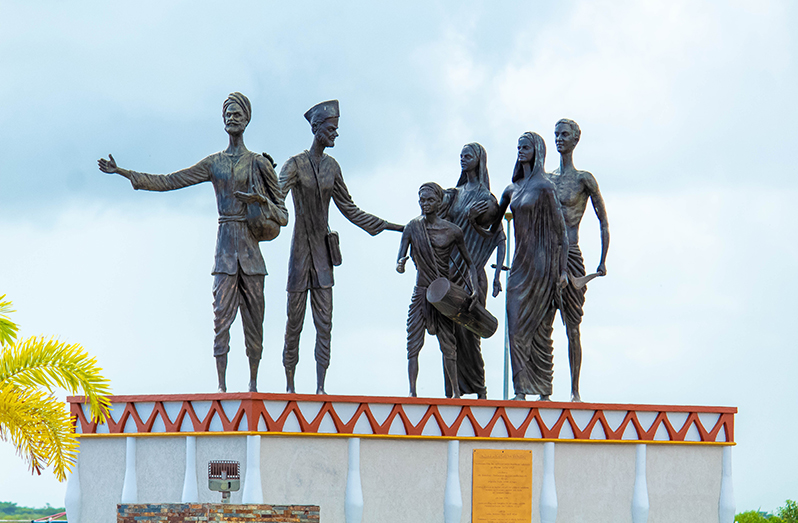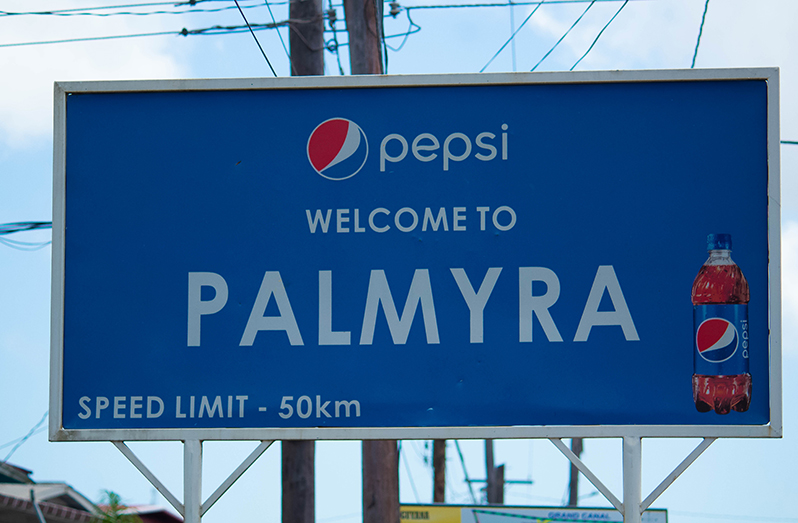A sense of togetherness forged by history
THE village of Palmyra is nestled in Berbice’s East Canje region, some 7.5 kilometres away from New Amsterdam. The village is home to Guyana’s famous Indian Arrival Monument. Palmyra is said to have been among the first settlements made home by indentured immigrants. This past of common struggle, strength and eventual development is perhaps why the village of Palmyra is still as close-knit and supportive as it is. Rayanna Henriques Persaud has lived most of her life in the village of Palmyra. She says that the village has remained unchanged for the most part.
Even today, as someone walking through the village of Palmyra, which runs along the road with only a few smaller streets, the only noise of the neighbourhood is the passing of cars. As Rayanna stated, “This neighbourhood is very quiet; we never had much activity. We didn’t have any clubs or anything like that; just peace and quiet.” And if anything has changed, the quiet tranquillity has remained. The village of Palmyra is, however, undergoing massive developments. The area of the village once occupied by cane fields now harbours a construction site stretching the length of the village. The village is slated to become home to a new stadium, housing scheme, and hospital.

But the community, as Rayanna describes, would find ways to entertain themselves. “We had our own things. The neighbours would come over and play marbles, hopscotch, cricket and volleyball. And all of it was played right in this front yard,” Rayanna stated. The people are a particular characterizing essence of the community. Palmyra’s population is predominantly that of Indo-Guyanese. Their ancestors are said to have shared similar past, of indentureship.
In describing the people, Rayanna painted a picture of welcoming and hospitable people. She shared that, “The neighbours are very friendly. You wouldn’t find bickering and fighting. You would walk on the road and everyone would say good afternoon. The people are very much friendly and very much welcoming.” She went on to share, “We didn’t even have to have an occasion to enjoy ourselves. Sometimes, we would just come together and have a pot. ”
Today, the villagers of Palmyra have regular nine-to-five jobs in places like New Amsterdam. Rayanna herself works at the New Amsterdam hospital. But she says that in the time gone, things like cattle, fishing and working at the sugar estate are how the people of Palmyra survived. “Most of the persons had different jobs. The majority worked at the estate. The only thing in farming is people would have little kitchen gardens.” Rayanna said.

Rayanna herself grew up in a family as the youngest of three. Rayanna’s family, like many at the time, had reared cows as well as kept bees. “We still do have cattle rearing. We had cows, and I used to enjoy that. I could remember when my brother used to milk the cows, I would go down at the back with just a cup to get milk, and drink it just like that.” She went on to share that, “We used to have honey bees too back in the day. I can remember sucking honey from the honeycomb.”
The sense of togetherness has always burned bright in the villa of Palmyra. As Rayanna stated, there were many things that the community would do together, even simple things. “Growing up, I remember going to the pasture at the back, and we would go and catch fish.”
Certain things like the burning of the cane fields facing the village are core memories for Rayanna, and helped cement why she loves the village of Palmyra. “For me when I was small, I used to enjoy it when the cane burned. My mother would lock up all the windows so the dust would go into the house. But I would come downstairs and as the cane dust came, I would jump and play with it,” she said.

The people of the neighbourhood had been in the habit of forming groups in the past. As Rayanna shared, “We used to catch fish and the women in the village came together and formed a rounders team and we would go and play. We also had an aerobics team we used to exercise together.” She went on to express that she, without a doubt, enjoyed back then to now, saying, “Now we have a lot of new persons and a lot of people migrated. And it’s not like before,” she said. “Now everybody just gets up and goes to work. They don’t interact with each other much. They just get up and do what they have to do and go back. By seven of eight o clock, the whole place shut down. You don’t find people going on the road and have a little game night, or anything like that.” Although the village of Palmyra has moved into a busier age, they don’t to seem to have lost their genuine love for each other and for their village.





.jpg)








